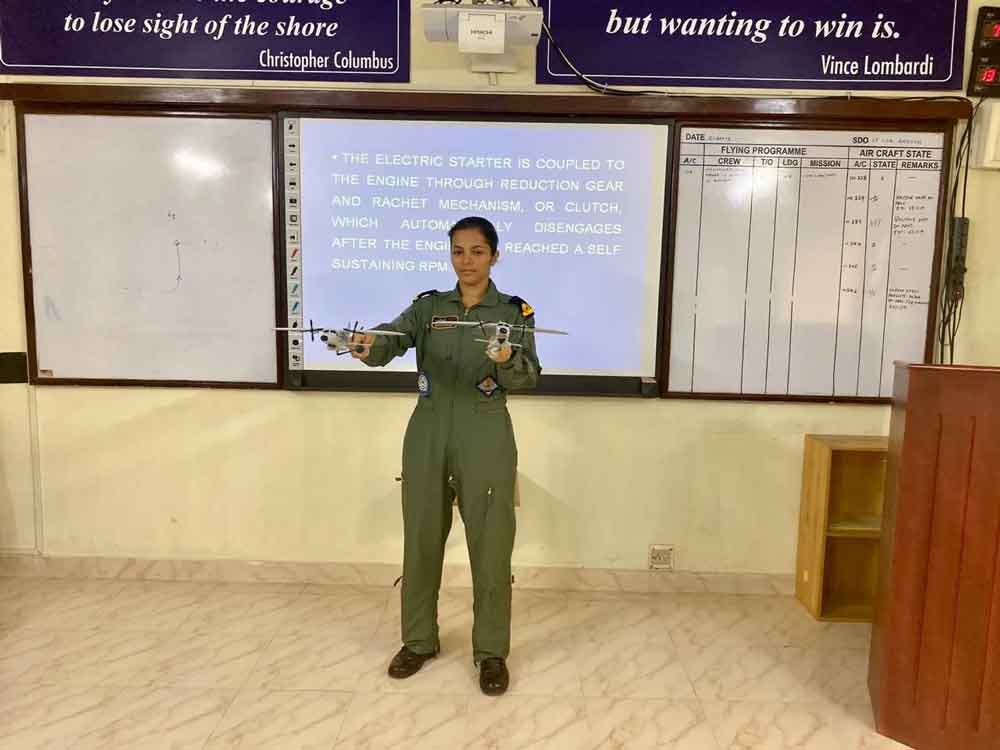Lieutenant Shivangi has made history as the Indian Navy's first woman pilot, breaking barriers in a traditionally male-dominated field. At just 24 years old, she officially earned her wings on December 2, marking a significant milestone for gender inclusion in the armed forces. Based at the Kochi Naval Base, she is now tasked with flying Dornier Do-228 surveillance aircraft, used for transport and maritime reconnaissance.
Her father, Hari Bhushan Singh is a schoolteacher and principal in-charge of a government high school for girls, and her mother, Priyanka is a homemaker. They raised her in a deeply traditional society where educating girls was rare. Yet, her family championed of education for decades. In 1980, Shivangi’s great-grandfather donated two acres of land to establish the Brahmarshi Yamuna Balika Uchch Vidyalaya for girls, now a government-adopted school where her father serves as officiating principal.

From an early age, Shivangi’s father encouraged her to chase her dreams, despite societal pressures. He motivated her to leave Bihar for higher education, leading her to pursue a BTech in Mechanical Engineering at the Sikkim Manipal Institute of Technology. This leap laid the foundation for her historic entry into the Indian Navy.
Her schooling at DAV Public School, Muzaffarpur, and her rigorous training at the Indian Naval Academy helped shape her disciplined and determined spirit. She excelled in naval aviation training at INAS 550 in Kochi, where she earned her wings and now pilots the Dornier Do-228 surveillance aircraft, contributing to the nation’s maritime reconnaissance operations.
During her higher studies at the Malaviya National Institute of Technology, Jaipur, a recruitment presentation by the Indian Navy ignited her interest in a military career. Leaving her academic path behind, she joined the navy to fulfil her childhood dream of flying.
Shivangi completed her basic training in 2018 at the Indian Naval Academy and continued her specialised aviation training with the Indian Naval Air Squadron 550 in Kochi. Her induction comes as part of a broader effort by the Indian Navy to expand opportunities for women, who were previously restricted to roles in medical services until the 1990s.

Breaking Barriers In The Navy
Shivangi’s role involves flying shore-based aircraft, as the Navy’s current infrastructure does not yet accommodate women aboard ships. While significant progress has been made, the process of integrating women into more operational roles (including ship-based positions) will require further changes to naval ship design. Shivangi is one of three women making strides as a naval pilot, a step towards greater representation and equality within the armed forces.
Shivangi’s accomplishment builds on earlier milestones within India’s armed forces, such as the induction of women fighter pilots in the Indian Air Force in 2016. Her journey signifies the breaking of a long-standing glass ceiling, proving that women can excel in roles traditionally reserved for men.

As the Navy continues to expand its horizons for women, Shivangi’s success serves as a powerful reminder that ambition, hard work, and determination can pave the way for future generations.